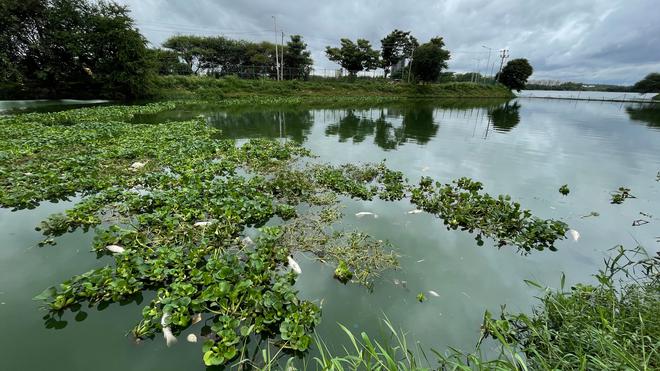The impact of the neglect of lakes by way of encroachments and unscientific rejuvenation processes was on full display during the recent heavy rains, but what goes on inside the lakes is a story that is equally distressing. As pollutants continue to flow into many lakes, it is wreaking havoc on the aquatic ecosystem.
Hundreds of fish have died in the city in the last few years. According to a report, which was released earlier this year, around 35 cases of fish kill were seen in the city in the last five years, with the Jakkur, the Kothanur, the Panatthur, and the Haralur lakes being identified as vulnerable.
In recent days, incidents of fish kill have been reported from all of these lakes, with one being reported from Haralur in the second week of September.
Most lake activists and local residents allege that the entry of sewage water into the lakes is the root cause of cases of fish kill.
The absence of appropriate monitoring by both the authorities concerned, the Bruhat Bengaluru Mahanagara Palike (BBMP) and the Karnataka State Pollution Control Board (KSPCB), is cited as the second cause.

“The sewage does not enter the lake when it is not raining. But when it rains, the drains overflow and there are two to three entry points from where the sewage gets mixed into the lake. I have been here for two years and I have seen at least five to six cases of fish kill already. We have been trying to get the BBMP to take some notice and coordinate with the other civic agencies like the BWSSB. They have issued a notice, but not much change is happening,” said Nagaraj Udupa, member, Kothanur Lake Development Association.
Instances of fish kill were reported from Kothanur lake in June and July. During a visit to the lake, The Hindu saw that a lot of solid waste, mainly constituting plastic, floating around the lake.
The same was the case at the Yelachenahalli lake too. In the nearby Chunchghatta lake, activists had recorded a video of fish coming up to the water surface for air.
Experts point out how the entry of chemicals and sewage reduces the dissolved oxygen (DO) levels in lakes.
“Pollution and nitrification of water causes the contamination of water. When the DO level reduces below 4%, the fish die. The chemical oxygen demand (COD) and biological oxygen demand (BOD) levels also increase tremendously when chemicals and untreated industrial effluents enter the water, and they also contribute to the reduction of DO levels,” said A.N. Yellappa Reddy, chairman, Bangalore Environment Trust.
He also added how apart from fish, domestic animals, which drink the contaminated water from these lakes, also suffer some ailments especially in the peri–urban areas. “Ultimately, the products from these animals, like milk, which is also consumed by the urbanites, leads to health hazards in humans too,” Mr. Reddy said.
Along with him, many lake conservators say that it is, however, not too late for the civic bodies to protect the biodiversity in lakes and what is most essential, is strict monitoring.
“The KSPCB brings out a water analysis report every month of all the lakes in the city. Any lake which receives the ranking E is not suitable for wildlife and fisheries. The BBMP should obtain these reports from them and the engineer in each zone should take steps to improve those parameters,” said Raghavendra Pachhapur, programme manager, ActionAid Association.
The BBMP says that the scale of cases of fish kill has reduced in recent years and that most incidents occur only during the summer.
“During dry weather, if sewage enters the lake, its concentration levels will be high which might cause cases of fish kill. We have created diversion channels to avoid the entry of sewage into the lakes. But in the rainy season, even though a few leaks might happen, it gets diluted as the lakes will be full. We have not come across any major cases of fish kill this rainy season,” said Shashi Kumar, Chief Engineer, Lakes, BBMP.
Lack of civic responsibility too is a cause. Despite numerous instruction boards, citizens dump solid waste into the lakes. This is why activists believe that until all citizens begin displaying proactive behaviour and hold those responsible accountable for the state of the waterbodies, full-fledged improvement of lakes cannot be seen.
(Readers may email their comments to letters.bangalore@thehindu.co.in)







